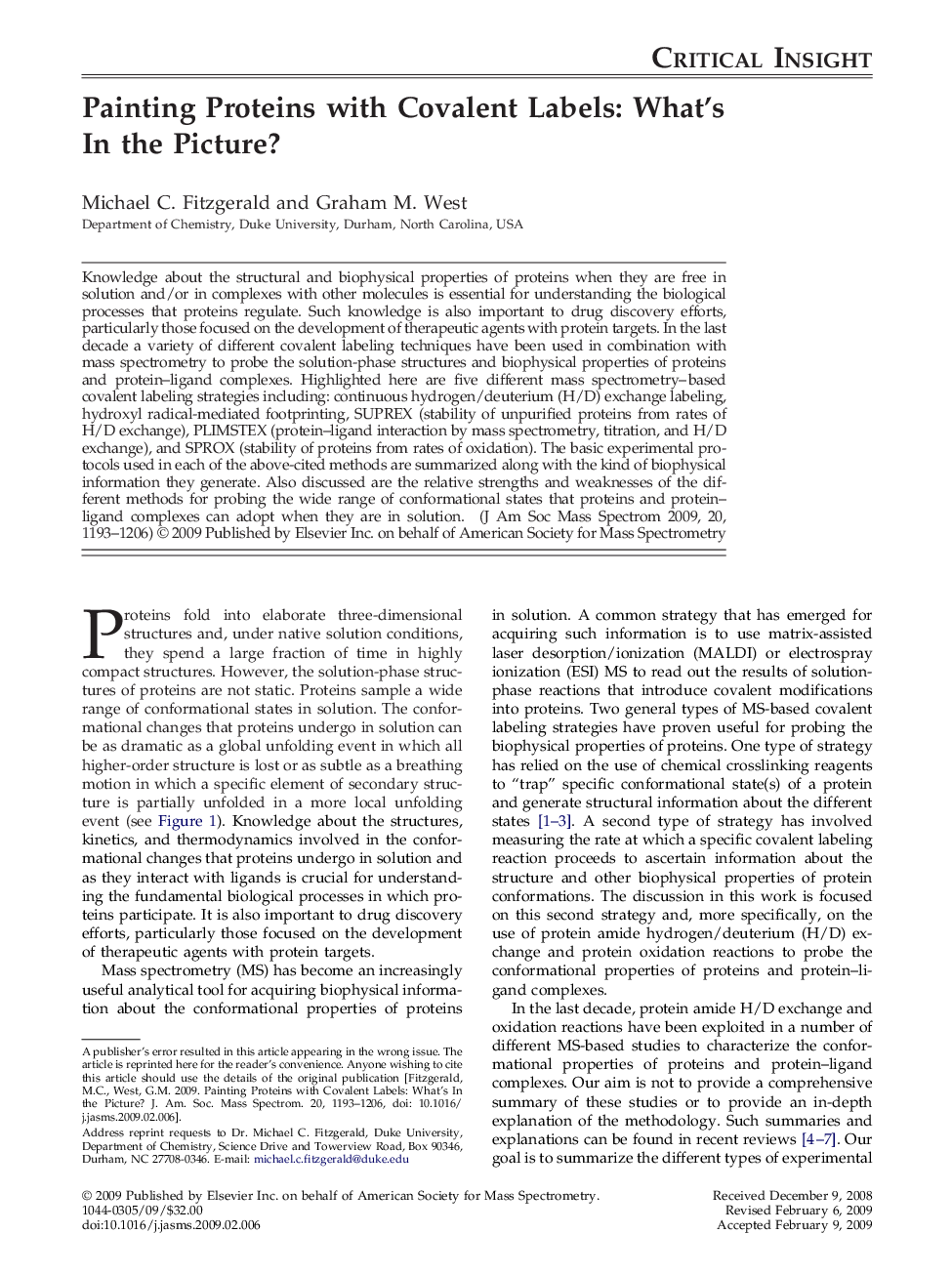| کد مقاله | کد نشریه | سال انتشار | مقاله انگلیسی | نسخه تمام متن |
|---|---|---|---|---|
| 1195295 | 964307 | 2009 | 14 صفحه PDF | دانلود رایگان |

Knowledge about the structural and biophysical properties of proteins when they are free in solution and/or in complexes with other molecules is essential for understanding the biological processes that proteins regulate. Such knowledge is also important to drug discovery efforts, particularly those focused on the development of therapeutic agents with protein targets. In the last decade a variety of different covalent labeling techniques have been used in combination with mass spectrometry to probe the solution-phase structures and biophysical properties of proteins and protein–ligand complexes. Highlighted here are five different mass spectrometry–based covalent labeling strategies including: continuous hydrogen/deuterium (H/D) exchange labeling, hydroxyl radical-mediated footprinting, SUPREX (stability of unpurified proteins from rates of H/D exchange), PLIMSTEX (protein–ligand interaction by mass spectrometry, titration, and H/D exchange), and SPROX (stability of proteins from rates of oxidation). The basic experimental protocols used in each of the above-cited methods are summarized along with the kind of biophysical information they generate. Also discussed are the relative strengths and weaknesses of the different methods for probing the wide range of conformational states that proteins and protein–ligand complexes can adopt when they are in solution.
Graphical AbstractHere we compare and contrast five different mass spectrometry–based protocols involving the use of amide H/D exchange and protein oxidation for the conformational analysis of proteins and protein–ligand complexes.Figure optionsDownload high-quality image (125 K)Download as PowerPoint slide
Journal: Journal of the American Society for Mass Spectrometry - Volume 20, Issue 6, June 2009, Pages 1193–1206